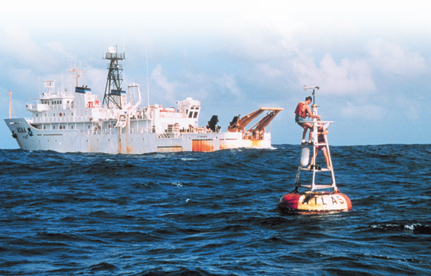
Geotimes Home | AGI Home | Information Services | Geoscience Education | Public Policy | Programs | Publications | Careers

 Last summer, a network
of buoys straddling the equator in the eastern Pacific registered abnormally high
sea-surface temperatures — signaling that El Niño, a driver of global
climate, had resurfaced after a four-year hiatus. The warm pool of water triggered
changes in jet streams that brought unseasonable warmth to the northern United
States west of the Rockies this winter, and a deluge of moisture to drought-ridden
states along the Gulf Coast.
Last summer, a network
of buoys straddling the equator in the eastern Pacific registered abnormally high
sea-surface temperatures — signaling that El Niño, a driver of global
climate, had resurfaced after a four-year hiatus. The warm pool of water triggered
changes in jet streams that brought unseasonable warmth to the northern United
States west of the Rockies this winter, and a deluge of moisture to drought-ridden
states along the Gulf Coast.
 |
Geotimes Home | AGI Home | Information Services | Geoscience Education | Public Policy | Programs | Publications | Careers |